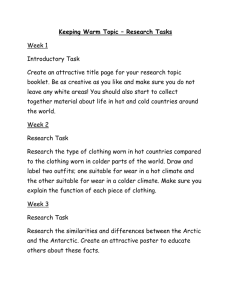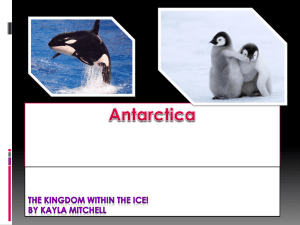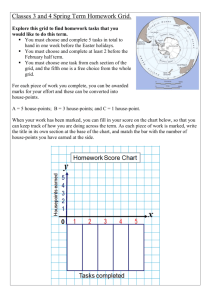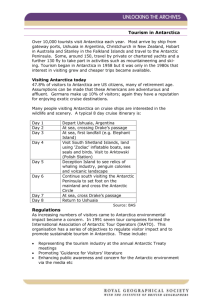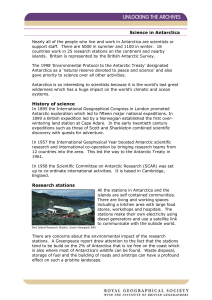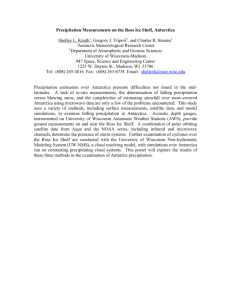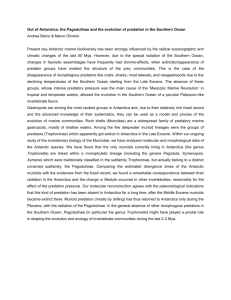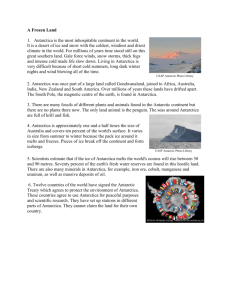Teacher Resources PDF
advertisement
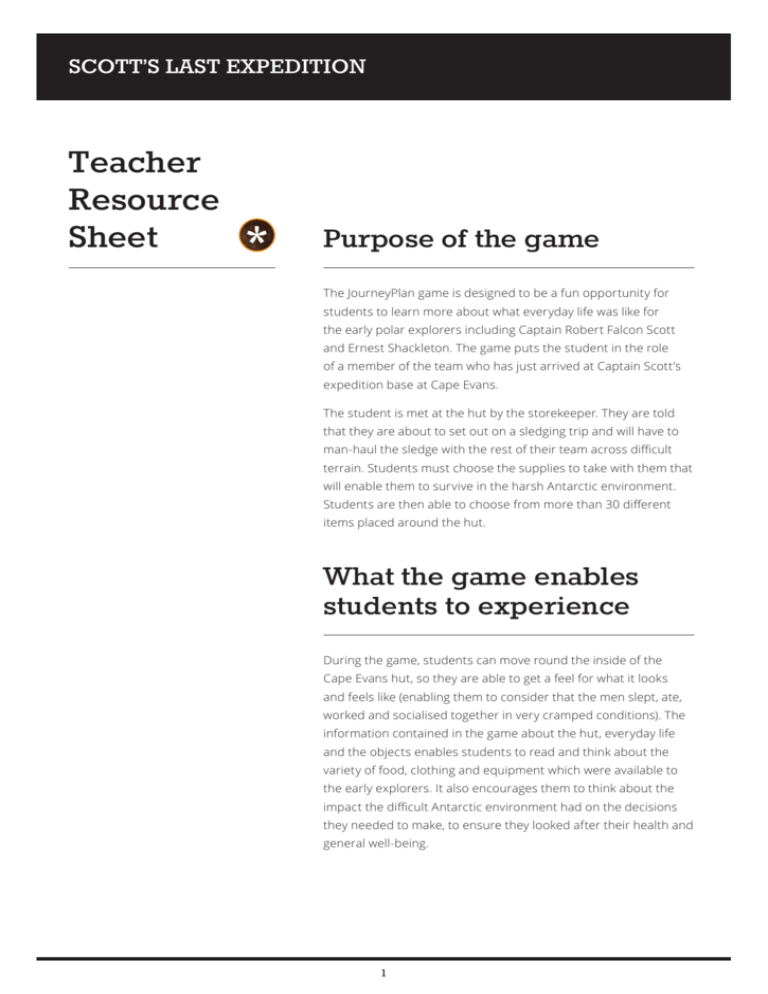
SCOTT’S LAST EXPEDITION Teacher Resource Sheet Purpose of the game The JourneyPlan game is designed to be a fun opportunity for students to learn more about what everyday life was like for the early polar explorers including Captain Robert Falcon Scott and Ernest Shackleton. The game puts the student in the role of a member of the team who has just arrived at Captain Scott’s expedition base at Cape Evans. The student is met at the hut by the storekeeper. They are told that they are about to set out on a sledging trip and will have to man-haul the sledge with the rest of their team across difficult terrain. Students must choose the supplies to take with them that will enable them to survive in the harsh Antarctic environment. Students are then able to choose from more than 30 different items placed around the hut. What the game enables students to experience During the game, students can move round the inside of the Cape Evans hut, so they are able to get a feel for what it looks and feels like (enabling them to consider that the men slept, ate, worked and socialised together in very cramped conditions). The information contained in the game about the hut, everyday life and the objects enables students to read and think about the variety of food, clothing and equipment which were available to the early explorers. It also encourages them to think about the impact the difficult Antarctic environment had on the decisions they needed to make, to ensure they looked after their health and general well-being. 1 SCOTT’S LAST EXPEDITION Ways to use the game with groups of students Students can work individually or in small groups to consider the options available to them. When working in groups students are encouraged to think about and discuss what they believe will sustain them and help them to survive in the Antarctic. In turn, in order to meet their needs, they learn about making good choices. One option would be for students to go through the game, then working with a teacher, undertake some of the activities described or referred to on this resource sheet (see below). Students can then go through the game again, to see what they have learned from the activities, and whether they would make different decisions, with the added knowledge in place. Using this resource sheet Teachers are encouraged to use the JourneyPlan game to help teach students about the lives of the early explorers. The resource sheet provides activities to compare the heroic explorer to the modern day explorer and scientist. In particular the game and resource sheet have been designed to encourage students to consider and understand more about: yy The effects of environment and place on the choices we make yy How people make choices to meet their needs and wants yy Accessing and managing resources yy How exploration creates opportunities and challenges for people. The JourneyPlan game and the resources included in this resource sheet, encourage students to think about the level of: yy Self-sufficiency and preparedness the explorers needed to have yy The teamwork which was required (and still is) when working in a highly hostile environment yy The pre-planning and preparation required when exploring and meeting the challenges of such a difficult living and working environment. Related learning outcomes In particular the game is a tool for teachers to use in relation to the following Social Studies outcomes: LEVEL 2: LEVEL 3: LEVEL 4: yy Understand how people yy Understand how people view and yy Understand how exploration make choices to meet their needs and wants yy Understand how places influence people and people influence places use places differently yy Understand how people make and innovation create opportunities and challenges decisions about access to and use of for people, places and resources environments yy Understand how people remember and record the past in different ways 2 yy Understand that events have causes and effects SCOTT’S LAST EXPEDITION Activities Group discussion: TASK Choosing supplies questions: yy What did the students think about when making their choices? yy What do they think is important when thinking about carrying all their stores with them like Scott and Amundsen’s teams did? yy How did they feel when thinking about having to carry or haul everything they would need with them when making choices about what to take? yy How did they balance thinking about their food, clothing and equipment needs with taking items which were to do with making them feel good like books, playing cards or being able to write letters home? Life in the Antarctic: Watch Race to the South Pole (Terra Nova Expedition) – Tragedy at the South Pole TASK (Antarctica). https://www.youtube.com/watch?v=dQrWmwnSBkg The film gives some interesting insights into recent research about the potential effects of planning and preparation on the early explorers, focused on Captain Scott’s team, and how it relates to the success of their expedition in comparison with Roald Amundsen who reached the South Pole first. Some very good reconstruction/dramatisation which might help students to compare the differences between the early explorers and current scientists/explorers. Clothing: how do you dress to survive in the coldest, windiest place on earth? TASK Review the Teacher Resource Book B, Scott’s last expedition: Review the information and undertake the tasks and activities related to clothing, pages 23-28. Other resources which may help include: Cool Antarctica – Modern Antarctic Clothing http://www.coolantarctica.com/Antarctica%20fact%20file/science/clothing_in_antarctica.htm Australian Antarctic Division, living and working – station amenities and operations: clothing and toiletries. http://www.antarctica.gov.au/living-and-working/station-life-and-activities/clothing-store Food: What food do you need to sustain you in Antarctica? TASK Review the Teacher Resource Book B, Scott’s last expedition: Review the information and undertake the tasks and activities related to food, pages 29-34. Other resources which may help include: Cool Antarctica – Food in Antarctica. Compares what current Antarctic scientists and explorers eat with what was eaten by the early explorers. http://www.coolantarctica.com/Antarctica%20fact%20file/science/food.htm Australian Antarctic Division, living and working – station amenities and operations: food. http://www.antarctica.gov.au/living-and-working/station-life-and-activities/food 3 SCOTT’S LAST EXPEDITION Living in the Hut: Watch: Review a film like A Tour of the Amundsen-Scott South Pole Station, Antarctica. TASK https://www.youtube.com/watch?v=P5lQ9DCXIbs Then take a walk through Scott’s hut at Cape Evans via Google Cultural Institute World Wonders website. https://www.google.com/culturalinstitute/entity/%2Fm%2F09txk5?projectId=world-wonders&v.filter=streetviews Encourage your students to think about the differences which they will see in Scott’s Cape Evans Hut in comparison with the living and working quarters of current Antarctic scientists and explorers. Think: In small groups, ask your students to think about the main differences which they can TASK observe between: yy The amount of living, working and social space which the two bases have yy The materials which the hut and other resources (clothes, equipment and food) are made of yy Food availability, storage, preservation, cooking and eating facilities yy Medical and health support/resources available to the teams yy Scientific equipment and technology available to the teams yy What people do in their spare time now in comparison with the early explorers yy Communication and ways to keep in touch with the rest of the world TASK Discuss: Living in a small group in a hostile environment, ask your students to discuss: yy How would they feel about living in a small space like the Cape Evans hut, in a very hostile environment, for months at a time with 20 other people? yy What would they need to do to ensure that the group gets on with each other? The resources, links and activities are designed to be a starting point for teachers when working with students. They are encouraged to come back to the JourneyPlan game several times to embed learning and spark further ideas, questions and activities. www.scottslastexpedition.org The www.scottslastexpedition.org website provides additional information and learning opportunities via The Journey pages and The Tour. Additional teacher resources are also available in the Learning & Discovery section of the site. The JourneyPlan game and resources were created by the Antarctic Heritage Trust (New Zealand). © 2014. 4
